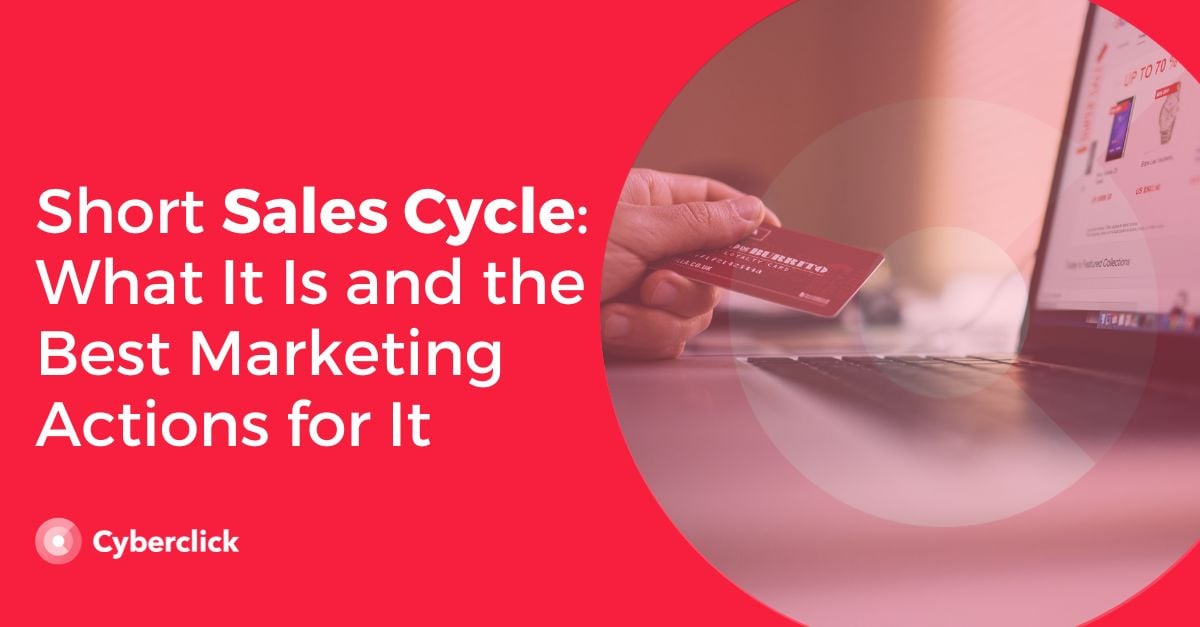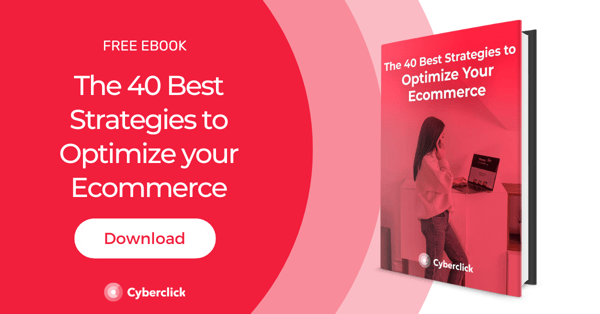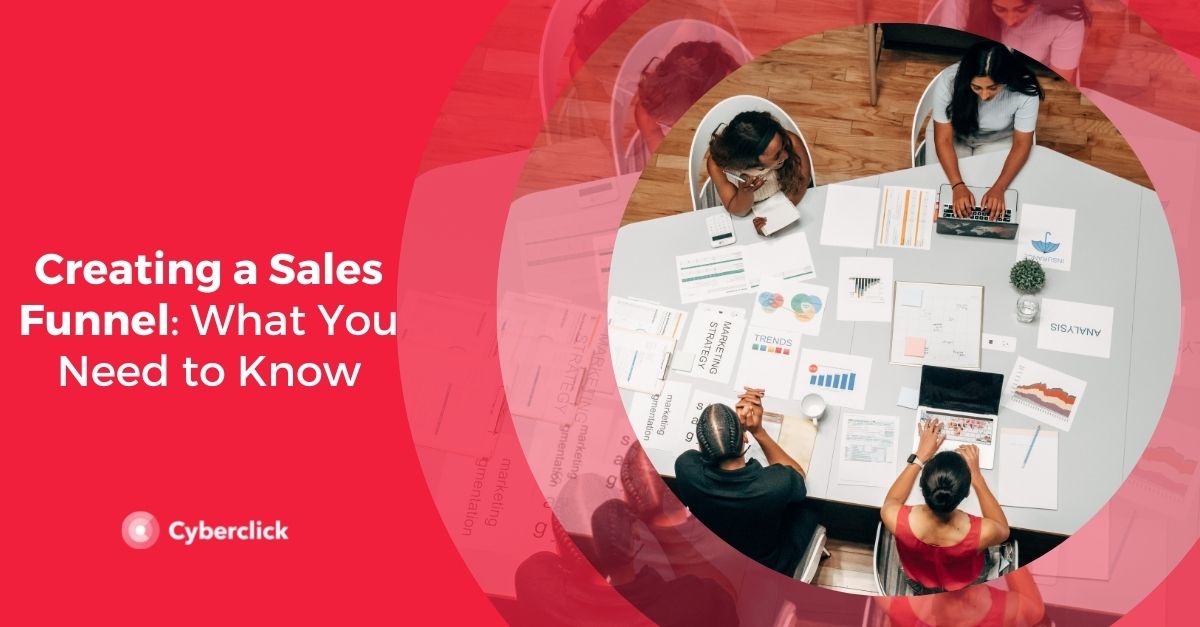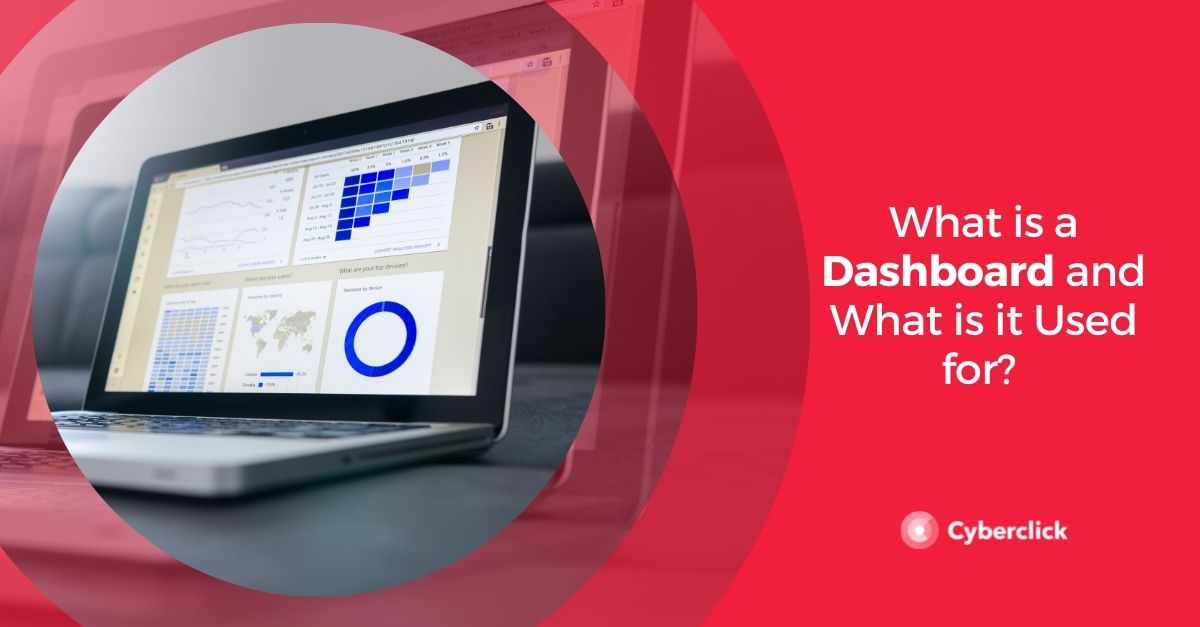In marketing, we continually analyze the phases or cycles that customers go through in order to adapt our strategies to them and offer them what they need.
But, not all cycles are the same. Some products go through long decision processes with multiple stakeholders, while for others, the purchase is shorter.
In this article, we are going to talk about the short sales cycle.


What Is a Short Sales Cycle?
The sales cycle is the process a consumer goes through from the moment a need arises until it is resolved by acquiring a specific product or service. In general, the consumer goes through the phases of awareness (identifying the need), consideration (researching different ways to solve this need), decision (choosing a product or service), and purchase (the final conversion).
But the big difference between short and long sales cycles is in the length of the process. In short product cycles, the evaluation and decision processes are faster. In general, we are talking about products with a lower cost and impact on the consumer's life, for example, shoes. On the contrary, in long purchase cycles, the process is extended due to the impact of the decision, for example, purchasing a computer or B2B software for a company.
The length of the buying cycle can also be affected by the degree of consumer loyalty. If it is a repeat customer, the buying cycle is likely to be shorter than if it is the first time a user is purchasing a product from a brand.
What Are the 5 Phases of a Short Purchase Cycle?
In general, we can divide short purchase cycles into five major phases:
- Investment. The company or brand decides to invest in creating a new product or service. The objective will be that it responds to a market need and ends up reporting profits at the end of the sales cycle.
- Sale in a physical or digital store. The product or service has been created and has passed all the internal and legal tests to go-to-market. It can be sold in physical stores, in the brand's digital store, or in third-party ecommerce businesses.
- Quick purchase decision. The consumer is interested in the product or service. Then, he or she compares different products and their reviews and makes the decision to purchase one of them.
- The sale is done! It is important that the customer has a positive experience so that they repeat future purchases with you or even become a brand ambassador.
-
Return on investment and restart the cycle. The company or brand recovers the money invested. You have two options from here. One, keep the net profits and redistribute profits among the partners, or two, reinvest to continue growing.
This structure is similar to that of the longer purchase cycles, but the difference lies in the duration of each phase.
Advantages and Disadvantages of a Short Purchase Decision Process
For companies, short purchasing cycles offer multiple advantages:
- Reaching more customers and acheiving higher sales volumes, which in turn generates more revenue.
- They help motivate sales reps more, as they can see the results of their work more quickly.
- Customers tend to prefer shorter buying cycles, as they allow them to find a faster solution to their problems.
- Finally, short buying cycles can give you a competitive advantage over your competitors by allowing you to get faster feedback on your buying processes and products and make improvements.
On the other hand, we also have to take into account the disadvantages of short purchase cycles:
- Because of so many interactions with consumers in a short period of time, there is more data to monitor, making it harder properly follow-up with everyone.
- In this type of sales process, consumers make decisions quickly, so it's important to pay attention to make sure you don't lose sales.
- Finally, due to the speed of the sales process, it is necessary to pay close attention to the customer experience and quality of service to make sure you leave a good impression.
Marketing Actions for a Short Buying Cycle
Brand Awareness
Brand awareness actions are focused on making the brand known among the public.
It is based on creating a unique identity for your brand, making it easily recognizable. Once this work is done, you can go further with content marketing, SEO, promotions, events, social media marketing, and more.
Remarketing
Once users have interacted with your brand awareness campaigns, you can perform remarketing actions to continue interacting with them and guide them through the conversion funnel. Depending on the stage of the conversion funnel they are in, you can segment them in different ways:
- TOFU: segmentation based on behaviors and interests.
- MOFU: similar audiences and personalized audiences.
- BOFU: users who have viewed 3 products or have an abandoned cart.
Social Ads
Social media ads can be adapted to multiple strategies and objectives. In this case, the most interesting campaigns are those focused on conversion goals and generating sales from a catalog.
Customer Loyalty
Finally, once you have managed to generate conversions, you must implement a series of actions aimed at getting customers to repeat their purchases. Loyalty campaigns can include email marketing, customer-oriented remarketing, after-sales actions, loyalty programs, and more.
CEO y cofundador de Cyberclick. Cuenta con más de 25 años de experiencia en el mundo online. Es ingeniero y cursó un programa de Entrepreneurship en MIT, Massachusetts Institute of Technology. En 2012 fue nombrado uno de los 20 emprendedores más influyentes en España, menores de 40 años, según la Global Entrepreneurship Week 2012 e IESE. Autor de "La empresa más feliz del mundo" y "Diario de un Millennial".
CEO and co-founder of Cyberclick. David Tomas has more than 25 years of experience in the online world. He is an engineer and completed an Entrepreneurship program at MIT, Massachusetts Institute of Technology. In 2012 he was named one of the 20 most influential entrepreneurs in Spain, under the age of 40, according to Global Entrepreneurship Week 2012 and IESE. Author of "The Happiest Company in the World" and "Diary of a Millennial".




.jpg)
Leave your comment and join the conversation